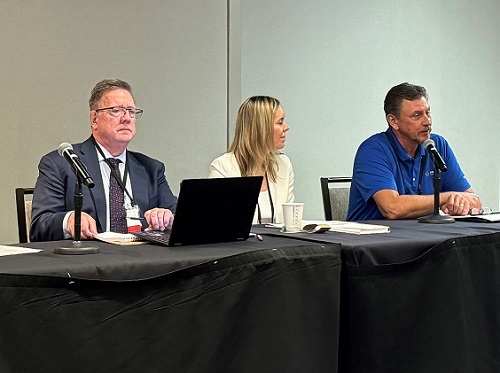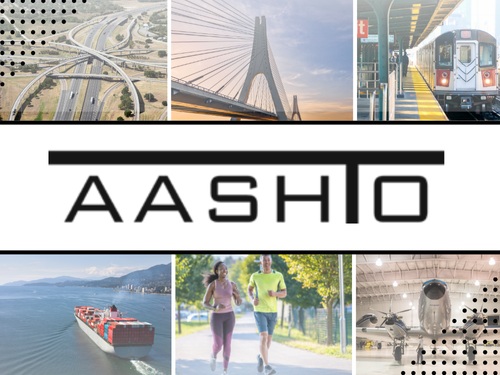A panel discussion held at the recent 2024 Safety Summit hosted by the American Association of State Highway and Transportation Officials in Houston examined ways to embed safety more deeply in transportation policy, legislative, and funding decisions.
[Above left to right: John Milton, Nicole Majeski, and Tim Gatz. Photo by AASHTO]
“We always talk about safety as our number one priority as state DOTs. But it is also about getting all the right people into the room and get them all on the same page – that is powerful,” explained Tim Gatz, executive director of the Oklahoma Department of Transportation.
“Getting [transportation] engineers, trauma doctors, law enforcement, and others together is hugely important. It is about developing advocacy and partnerships with a lot of different groups and then leveraging that power to make positive change,” he stressed. “Any state that has had success with legislation has to have partners – it is all about consensus building.”

Yet Gatz noted underlying efforts to make safety improvements is how to balance priorities with available resources. “That is enormously challenging,” he noted. “For example, we are 200 [state] troopers short of where we need to be, with half of [those now working] eligible to retire. On top of that, it is increasingly difficult to get people to join [the state patrol]. So in terms of increasing enforcement to improve safety, those issues are always part of the ongoing conversation.”
Despite such challenges, Gatz said improvements can and are being made – particularly in terms of where to allocate funding for safety improvements. “In the United States, while 20 percent of our population lives in rural areas, rural areas are home to 40 percent of our traffic fatalities. In Oklahoma, some 30 percent of our population lives in rural areas, which are home to 57 percent of our state’s traffic fatalities,” he said.
For that reason, the Oklahoma DOT has placed a “real laser focus” on rural two-lane road safety. “We used a rural TIFIA [Transportation Infrastructure Finance and Innovation Act] loan to make rural safety improvements – that way we could make improvements happen faster and save lives,” Gatz said. “That got attention of our state legislators – and that led to creation of RETRO [the Rural Economic Transportation Reliability and Optimization Fund] and we use those dollars to focus on rural two-lane safety issues. We’re addressing this with a sense of urgency. And by venturing into that area with TIFIA funds, we got our legislature to pay attention and support a major safety effort.”
Nicole Majeski, secretary of the Delaware Department of Transportation, added that data is one of the keys to getting such funding commitments to transportation safety improvements.
“We need to use data to drive home the message of what we need to focus on,” she emphasized. “Being intentional about data – making it simple, purposeful, and showing it everywhere we go – is how we justify the funding. Because if you want a multimodal system that is safe for everyone to use, you have to have funding for it.”
John Milton – director of transportation safety and systems analysis for the Washington State Department of Transportation and vice chair of AASHTO’s Committee on Safety – echoed Majeski’s points regarding the importance of using data to support critical safety improvements.
“The issue of data is a very important one – it shows what is happening on our roads as well as identify the societal costs of crashes,” he explained. “That helps drive evidence-based safety conversations.”
Yet the ultimate goal of those “conversations” is to build partnerships that, in turn, result in legislative and funding commitments for safety improvements.
“We have a very good partnership with our legislative body,” he said – noting that Washington State has proposed a $475 million biennial investment in road safety infrastructure; including the construction of more roundabout intersections and safety improvements for highway work zones.
“Partnerships are absolutely critical to legislative efforts,” Milton said. “Bringing the community and businesses into the discussion can amp up that effort. Because it is absolutely critical to have partners when you are working on obtaining more funding, for they help others understand where you are trying to go – that is what partnerships help you do.”
 Nation
Nation
Registration Open for 2026 AASHTO Washington Briefing
December 12, 2025 Nation
Nation

